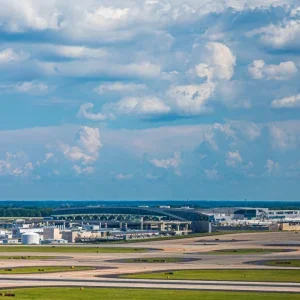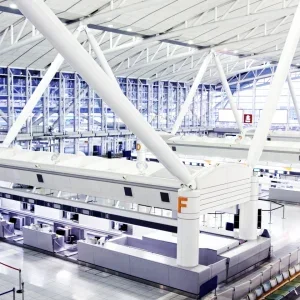The Port Authority of New York and New Jersey has broken ground on new Terminal One at Newark Liberty International airport in New Jersey, US.
The new facility is expected to provide a world-class experience for passengers with the replacement of the outdated Terminal A. It forms the centrepiece of Newark Liberty’s $2.7bn modernisation and redevelopment.
Terminal A, inaugurated in 1973, was designed for a maximum capacity of nine million passengers a year. It has served over 11 million passengers in 2017 and is functionally obsolete.
In its first year of operation in 2022, Terminal One will be able to accommodate 13.6 million passengers on three levels; and have the potential for further expansion.
The new terminal will feature 33 common-use gates to handle larger aircraft within one million square feet of terminal space, in addition to modern check-in, security, and baggage claim areas.
Work on Terminal One will be taken up in phases to minimise inconvenience to customers. The project is expected to create more than $4.6 billion in regional economic activity, create over 23,000 jobs in the region.
The terminal is scheduled for a partial opening with 21 gates ready for use in 2021, and a new parking facility. It is expected to be fully operational by 2022 with the addition of 12 more gates.
A covered pedestrian bridge will provide direct terminal access for passengers using AirTrain Newark.
Tutor Perini/Parsons, a joint venture between Tutor Perini Corporation and Parsons Transportation Group, will design and build the new terminal through a fixed-cost, design-build contract that will incentivise ideas and transfer project delivery risk to the private sector.
The terminal building is also targeted to achieve LEED Silver rating, with sustainable building materials, including solar panels to help power the facility.
The current facility faces several shortcomings, including cramped areas for check-in, security and baggage claim, as well as space constraints on frontage roads, which the new terminal will address.
All gates in the new ‘common use’ terminal will be utilised by multiple carriers, increasing flexibility and efficiency, and optimising operations.
Airside improvements for planes include a new aeronautical taxi-lane network to increase efficiency in operations. Dual taxi-lanes are also planned, which will be carried out in conjunction with the terminal work.
The new terminal will also offer retail options, with more shops and restaurants post-security compared with the current terminal’s retail, most of which is located before the security area.




